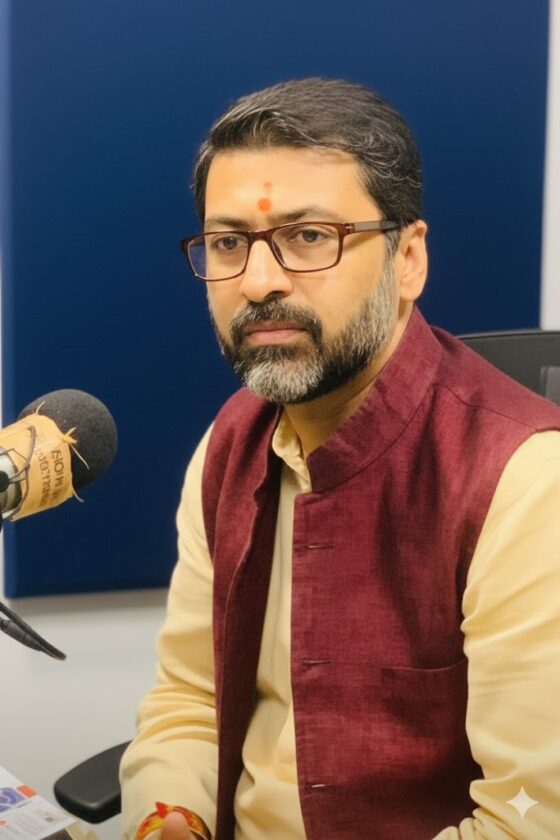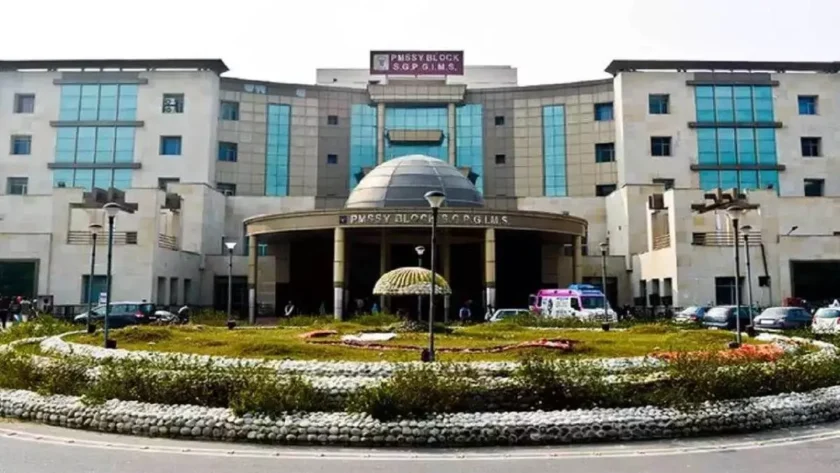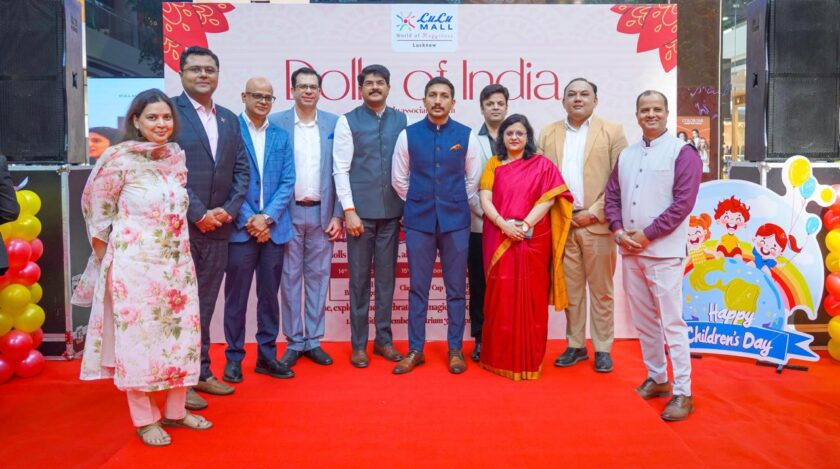Lucknow— The Kokoro Art Gallery in Lucknow hosted the opening of photographer Ajaish (Ajay) Jaiswal’s solo exhibition “Shadows of Time”. The exhibition was inaugurated by Sanjay Kumar (IAS), Director General, Public Enterprises, Uttar Pradesh, and Secretary, Uttar Pradesh Human Rights Commission. Prasar Bharati Chairman Navneet Sehgal was also present as a distinguished guest.
The event drew prominent personalities from the cultural and administrative spheres of the city, who lauded Jaiswal’s artistic vision, thematic depth and nuanced sensibilities. The exhibition features 30 monochrome photographs, attracting senior artists, academicians, photography students and art enthusiasts, creating a vibrant, engaging cultural atmosphere. Curated by Vandana Sehgal, the exhibition focuses on Lucknow’s historic Residency complex, exploring the layered relationships between light, shadow, memory and time.
The Residency—marked by its weathered walls, scarred bricks, silent courtyards and elongated shadows—carries deep historical resonance. While most artists approach it from a documentary perspective, Jaiswal searches for the breath of time hidden within its ruins. His photographs transform the space from a mere relic of the past into a living, conversing landscape where time appears sometimes as a sliver of light and sometimes as a deepening shadow. For the artist, photography is not the act of simply “capturing” a moment but an attempt to translate time through the language of shadows.
The choice of monochrome forms the aesthetic core of the exhibition. The absence of colour directs the viewer’s attention to structural and emotional details that often go unnoticed—weathered textures, eroded surfaces, architectural geometry, the direction of light and the depth of shadow. Here, monochrome becomes not just a technique but a visual philosophy. Each frame gradually gravitates toward abstraction, encouraging the viewer not merely to see but to experience.
In Jaiswal’s work, light and shadow complement rather than oppose each other. Sunbeams filtering through broken arches form fleeting triangles on walls, cast momentary geometries on crumbling pillars and create unexpected glimmers within the darkness. It is this ephemerality that shapes the enduring beauty of the images. As writer Gregory Maguire wrote, “The eye is always caught by light, but shadows have more to say.” This sentiment resonates perfectly with the visual language of the exhibition.

Curator Vandana Sehgal situates the artist’s vision within a wider contemporary artistic context. She notes that Jaiswal’s work reflects a remarkable range of themes, scales and emotional constructs—stretching from expansive heritage architecture to the intimate world of a single dew drop. This versatility underscores how contemporary photography has evolved from mere documentation into an integrated art form of ideas, structure, emotion and aesthetics. “Shadows of Time” stands as a living testament to this transformation.
The photographs also explore silence, memory and the presence of absence. A thought shared by Jaiswal’s wife, Sangita Jaiswal—“Where there is shadow, there must be light”—deeply reflects the artist’s inner lens. He gravitates toward scenes where it is not the noise of history but the quietness of time that speaks. His images remind viewers that ruins are not symbols of destruction but spaces of continuing memory—where silence converses and absence resurfaces as presence.
Jaiswal describes the Residency as the first muse of his photographic journey—a place that always felt like returning to time itself. While the grandeur of the Bara Imambara fascinated him, the Residency called out to him with its soft, shadow-laden language. “Shadows of Time” is the translation of that call, that language and that silence.
More than a collection of photographs, the exhibition is a refined visual narrative that interprets the layered interplay of time, history and architecture through light and shadow. Ajaish Jaiswal’s work reminds us that these elements are not merely visual effects—they are expressions of time itself, and the artist becomes the interpreter who makes this language meaningful for the viewer.





